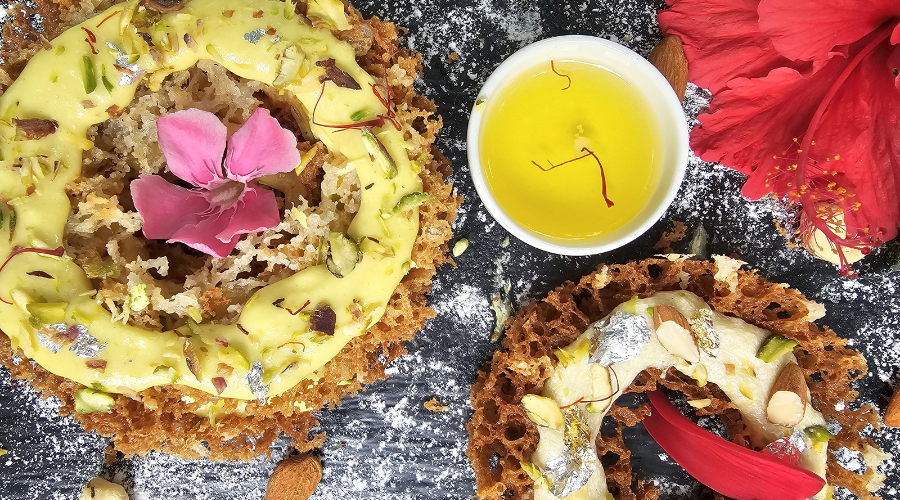As the monsoons roll in, the landscape turns lush green and India comes alive with festive cheer. The season is considered auspicious for the Indian community. Among the early markers of festivals is Haryali Teej, a vibrant festival celebrated mainly by women in parts of North India like Rajasthan, Uttar Pradesh, Bihar and Delhi. It marks the union of Goddess Parvati and Lord Shiva, symbolising love and giving the message of devotion to the masses. The women and girls celebrate the abundance of nature, greenery, and rain by donning traditional attire, applying mehndi, singing and dancing to traditional songs, and observing fasts for the well-being of their husbands or future partners. After a day of fasting and ritual worship, women break the fast with a festive thali packed with authentic sweets like ghewar, malpua, laddos, and kheer, making it an ultimate sweet feast.
Chef Bidyut Saha, the Executive Chef at Taj Corbett Resort and Spa, shares his recipe for Ghewar with a twist of adding Lacche Wali Rabdi on top for extra sweetness. “Ghevar is a canvas of tradition and precision, with delicate frying, syrup-soaked to perfection, all in timing,” said Saha to Outlook Traveller Eats. Ghewar is a heritage-rich dessert with a seasonal significance during Teej that is deeply meaningful and has connected people worldwide.
“ I’m not just preparing a sweet, I’m honouring a cultural moment, evoking nostalgia, and crafting an experience that resonates with both palate and memory,” added Saha.
Relish the crispy, golden, and intricately laced Ghewar, a Rajasthani masterpiece that turns dessert into art. Traditionally savoured during Teej, this syrup-soaked sweetness with rabdi toppings will make every bite a celebration.














